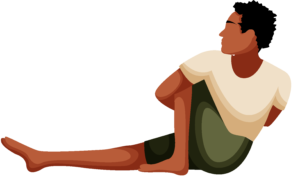Sage Marichi’s III (Marichyasana III)
Pose Overview
| Common Name | Sage Marichi's III |
| Traditional Sanskrit Name | Marichyasana III |
| Sanskrit Name Pronunciation | mar-ee-chee-AHS-ah-nuh |
| Pose Difficulty | Advanced |
| Drishti
Drishti is the gaze or visual focus point during yoga poses.
Learn more about Drishti |
Over the shoulder |
Sage Marichi's III, also known as Marichyasana III, is a challenging standing yoga pose that requires a strong focus and determination to execute properly. This pose is named after Sage Marichi, one of the seven seers of ancient India, and is considered to be an advanced yoga pose that can be found in many traditional yoga sequences.
Benefits of Sage Marichi's III
This pose offers many benefits including: Strengthening the core, back and legs Improving balance and stability Stretching the shoulders, hips, and hamstrings Massaging the abdominal organs
How to Enter Sage Marichi's III
Begin in Dandasana (staff pose) Bend the right knee and bring the right heel towards the right sitting bone Keep the right knee pointing towards the ceiling Place the right hand behind the right knee and the left hand behind the back Hold the left elbow with the right hand, and twist to the right as you extend the left arm straight behind you Keep the left knee close to the floor Turn the head and gaze over the left shoulder Hold for 5-8 breaths and repeat on the other side
How to Exit Sage Marichi's III
Release the twist and the arms Straighten the right leg and return to Dandasana
Common Sage Marichi's III Modifications & Variations
If you have trouble reaching the foot or elbow, use a strap to assist If you have trouble sitting on the floor, use a folded blanket to support the sitting bones If you have trouble twisting, keep the gaze forward and twist from the waist
Common Mistakes with Sage Marichi's III
Not keeping the sitting bones grounded Lifting the back heel off the floor Not keeping the front knee pointed towards the ceiling Not keeping the back knee close to the floor
Safety Guidance
If you have any knee or lower back injuries, practice this pose with caution If you have any shoulder injuries, avoid this pose Do not force the twist or the arm extension

